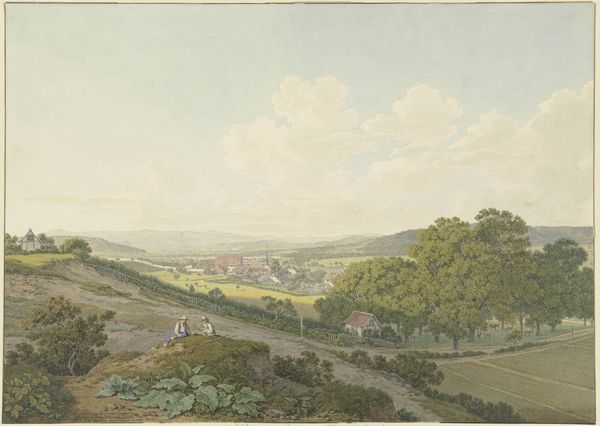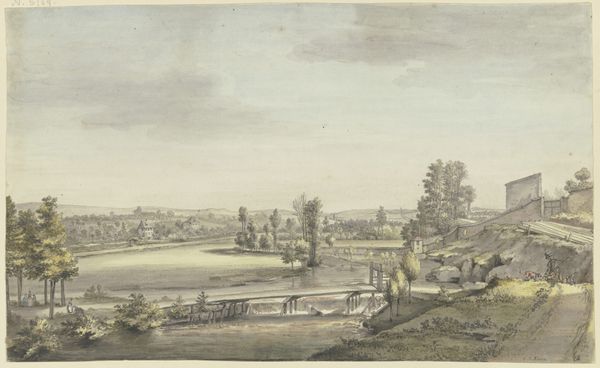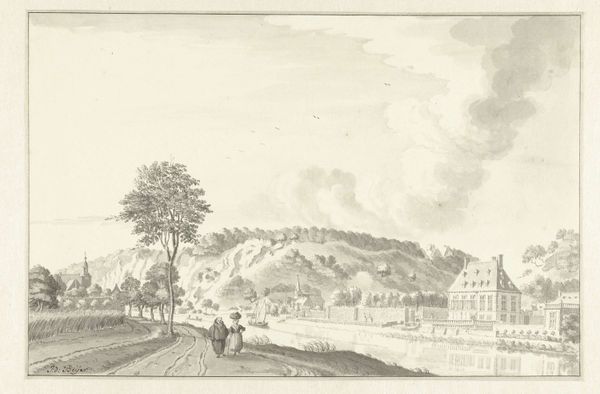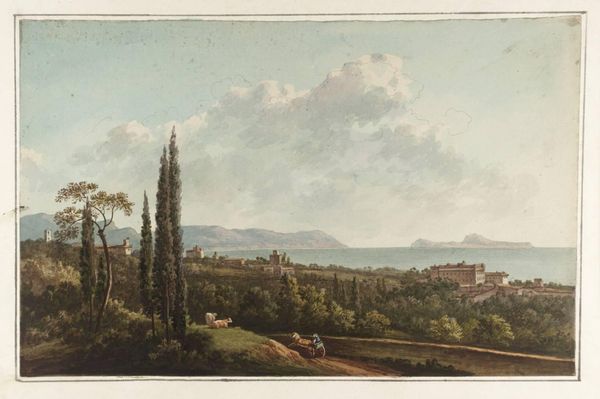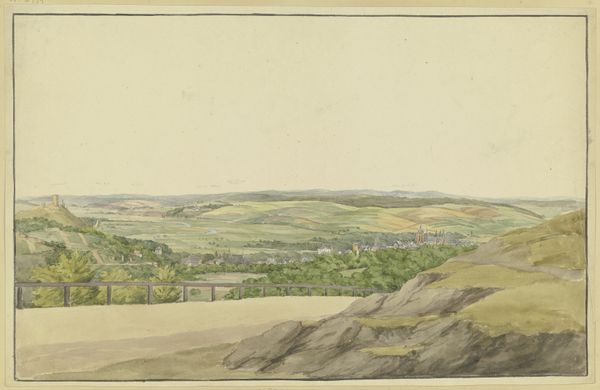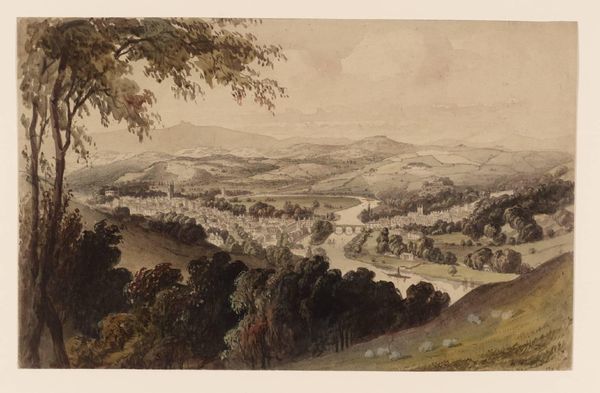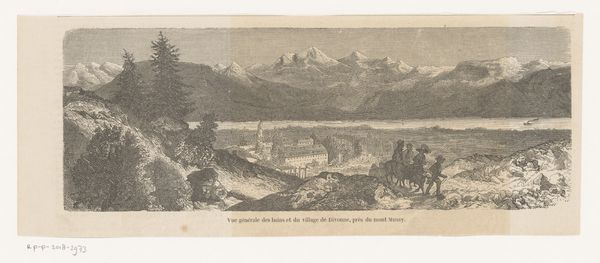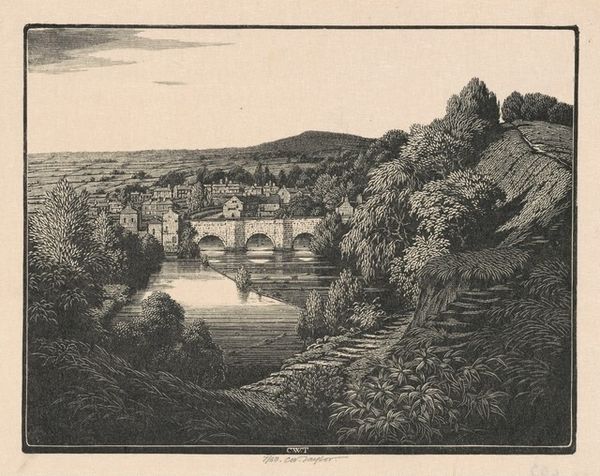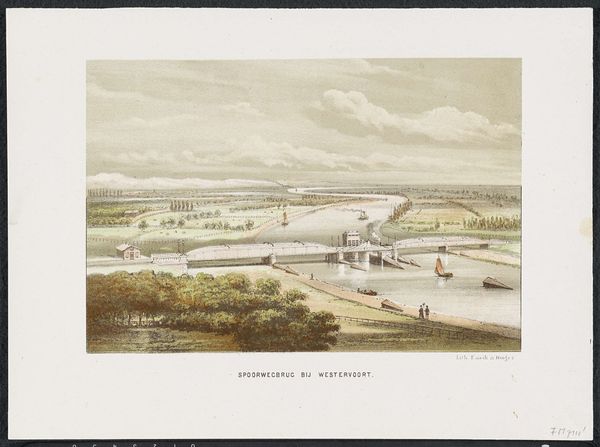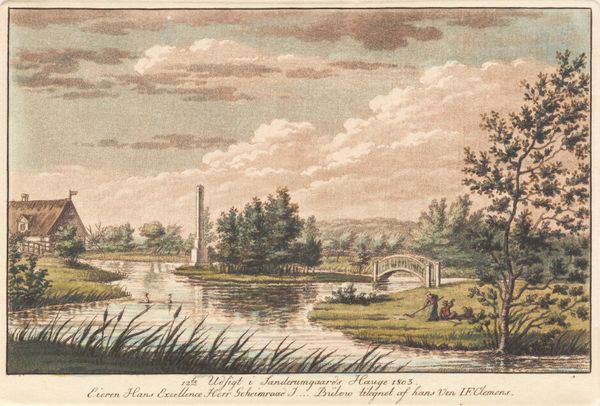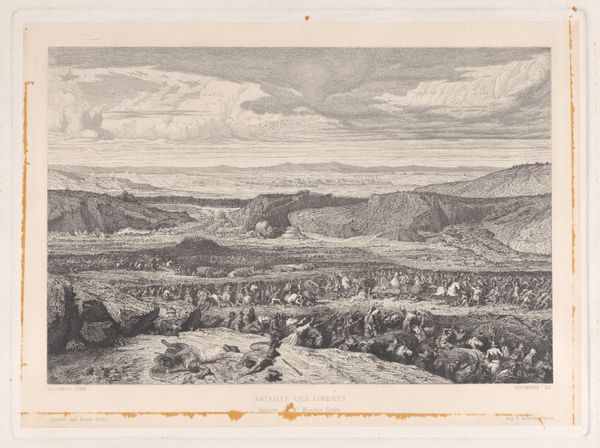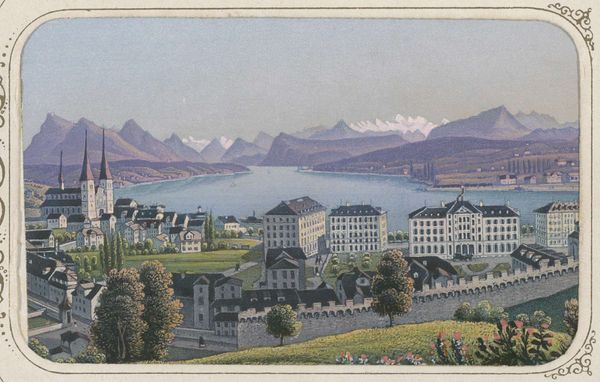
Gezicht op de stad Bern met op de voorgrond een spoorwegviaduct c. 1860 - 1890
Dimensions: height 53 mm, width 95 mm
Copyright: Rijks Museum: Open Domain
Curator: Here we have Rudolf Dikenmann’s “View of the City of Bern with a Railway Viaduct in the Foreground,” a watercolor work dating from roughly 1860 to 1890. Editor: My initial impression is one of peaceful co-existence. A pastoral landscape, almost fairy-tale-like with the Alps in the background, is intersected by the stark geometry of the industrial-age viaduct. There's a tension, but a beautiful one. Curator: Indeed. Dikenmann’s work arrives during a fascinating period. Think about the material realities: watercolor, so often associated with amateur or “feminine” art practices, here meticulously documents the rapidly industrializing world. It speaks volumes about class and leisure and the artist’s own consumption habits of painting materials. Editor: And about anxieties! This image comes to us as Bern adapted to a railway line cutting through the city's edge. We see that the picturesque tradition, the representation of landscape for leisure and civic pride, now incorporates and, arguably, grapples with modernity. A public-facing visual negotiation of change. Curator: Absolutely. And consider the watercolor itself. The medium allows for precise detail, yet also a certain ethereality. The layering of washes creates a sense of depth that highlights the viaduct's imposing presence. The cost and access to materials shaped who could participate in both art production and the changing social landscape. Editor: So, not simply a landscape but a document of shifting public identity. Notice, too, the perspective carefully places the viewer at a distance, allowing them to consume both the 'old' Bern and the new infrastructural interventions simultaneously. It invites contemplation, not immediate immersion, within a changing landscape. Curator: Exactly. And that perspective highlights the choices inherent in the process, the physical positioning of the artist, the selection of viewpoint… It reveals how access shapes representation itself. What were the labor practices in Dikenmann’s time when making such an art piece and how it represents or fails to account for it? Editor: Right. And to follow that: what are the contemporary exhibitionary practices around showing artwork, like this, to a contemporary audience? What public purpose does placing Dikenmann’s image in dialogue with a rapidly-evolving Bern achieve now? Curator: It makes me realize the constant interplay between our surroundings, its materiality, and the labor embedded into what comes to be defined as something like art, a definition subject to so many forces. Editor: For me, it’s about remembering the role art plays in reflecting our history and provoking the questions to inform our ever changing-society.
Comments
No comments
Be the first to comment and join the conversation on the ultimate creative platform.
